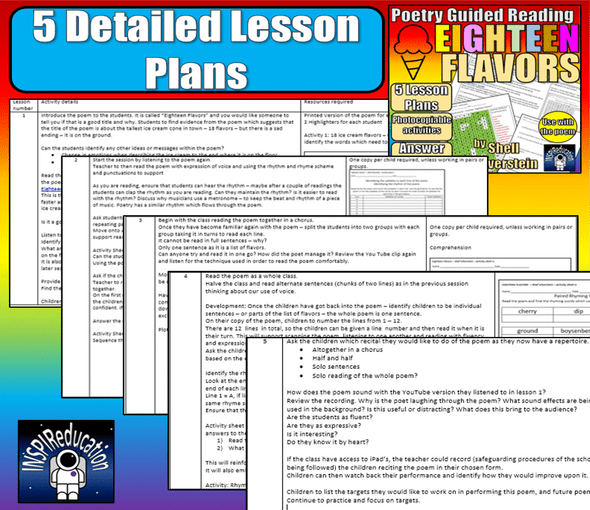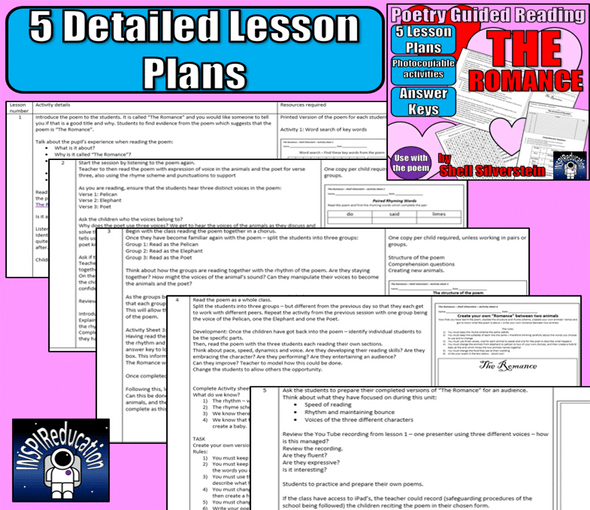Description
This product has been developed as part of a week long Guided Reading Unit using the poem:
"Where the Sidewalk Ends" by Shel Silverstein (not included in the resource but readily available)
In the poem, the poet describes a secret play-place which only children can find. It enables them to escape the smog and smoke of the city and play with excitement in an incredible place! It contrasts the life of adulthood with childhood - and implores children as they grow up to always find the time to play and balance their lives - a fantastic message for students today!
We have put together our 5 detailed lesson plans which include notes on how to introduce the poem using a You Tube clip - the link is included in the teaching plans, before reading it yourself. The children therefore hear a professional recital of the poem and understand how fluency, pace and expression should be used.
Included in this product:
- 5 day, detailed lesson plan identifying how to teach the reading of the poem and links with specific resources included and when/how to use them.
- 6 photocopiable resources for the class to use
- Answer Key for each activity where it is needed (one activity is student response to imagery where they share how they respond to specific vocabulary within the poem, therefore no answer key is provided for this activity.
Over the five lessons, the development of the reading of the poem is clear:
Day 1: Hear the poem for the first time, read it aloud together, trying to keep together
Day 2: Continue to practice the poem, adding in expression for the different, contrasting main verses of childhood play and adult responsibility - this also develops language knowledge too.
Day 3: Develop a chorus and split the group into two separate roles
Day 4: Group chorus to be developed further and individual children reading sections and finally, the whole poem with fluency and expression
Day 5: Work through the repertoire which the children now have - group performance, solo and group chorus. Day 5 also includes opportunities for assessment and target setting to reflect on next steps in learning.
Each day, not only do the children learn how to read, recite and perform poetry through a range of activities, but they get to know the poem in greater depth by completing 6 activities:
- Activity 1: Word search identifying new vocabulary - contrasting styles used within the poem
- Activity 2: Linking new vocabulary to its definition
- Activity 3: Positive and negative used of vocabulary
- Activity 4: Exploring imagery within language
- Activity 5: Rhyme Scheme, Poetry observation - questions about the poem
- Activity 6: Comprehension questions and review of learning and discussions through the five lessons
Each activity has its' own answer key, and can form part of the lesson, as it dictated in the lesson plan, or can be provided as a home based activity, early morning activity, early finisher, or Literacy Center activity.
This plan will easily cover a weeks worth of Guided Reading sessions, and by the end of the week, the children will have learnt the poem off by heart - so why not celebrate by performing it to an audience? Students will know this poem well by the end of the unit and have delved deeply into the meanings, the contrasts, the use of vocabulary, imagery, structure and also, enjoyed the poem too!
Best wishes
INSPIReducation


















